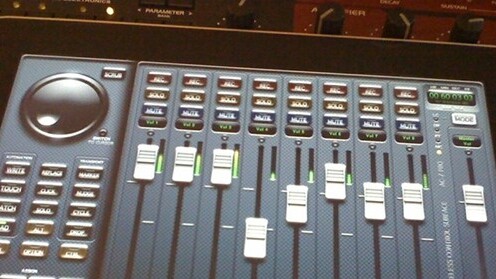
 It’s an undeniable truth that the history of popular music is one where the evolutionary steps forward are the result of an introduction of new technologies. This applies to all areas from distribution (vinyl, CD, mp3) to audience interaction (sheet music, radio, TV, the web) and – probably the main force for change in the music itself – the instruments and tools that are used to record and perform.
It’s an undeniable truth that the history of popular music is one where the evolutionary steps forward are the result of an introduction of new technologies. This applies to all areas from distribution (vinyl, CD, mp3) to audience interaction (sheet music, radio, TV, the web) and – probably the main force for change in the music itself – the instruments and tools that are used to record and perform.
Whether it’s the introduction of the electric guitar that gave birth to rock n roll, or the synths and samplers that became the primary devices behind Hip Hop and Electronica, leaps forward in music tech have given birth to the new genres that have kept music vital and exciting for the past sixty years. Although we’ve not really seen much evolution in this area since the 80’s its certain that the rise of mobile devices with a wide range of musical capabilities such as the iPad, which was practically everywhere at recent NAMM music technology event, are heralding a new dawn for the way music is performed and created.
The key area here is the interface itself, since the iPad’s large and reactive touchscreen presents a means of controlling the way sound is created and manipulated that could end up as important to the evolution of musical genres and styles as the turntables did back in the 70s. It helps too that the focus on the device as tool for music has been a core part of Apples vision from the start and its this that has aided app developers such as Audanika, who have developed the superb Soundprism, in bringing their ideas for a touchscreen based musical tool to life.
Soundprism is based on existing theories around easier to understand visual interfaces for musical performance, and according to Audanika’s CEO Sebastian Dittman is “knowledge poured into a dynamic interface that enables users to just use that knowledge without having to acquire it first”. In real terms this means you have a beautiful interface that not only sounds harmonious regardless of how you “play” it but also an new instrument in its own right that’s easy to understand and master.
Where things start to really get clever with touchscreen apps such as Soundprism is when they can be used as controllers for existing music technology and software. Audanika is currently beta testing the app as a MIDI controller that will allow musicians and producers to control their synths, samplers and drum machines in an exciting and dynamic new way as well as looking to create features that will allow this control to be shared by multiple devices – allowing an mobile ensemble with it’s participants controlling individual elements such as rhythm, timbre and harmony from their iPads, iPods and iPhones.
Other notable and innovative tools in this new mobile music space include Gliss (used by Gorillaz on their recent iPad created album “The Fall”) and Pulsate, both of which allow you to create lush (and often odd) sounding sonic landscapes using a simple visual interface and Thumbjam, an app that lets you use the touchscreen to play normal instruments such as guitar and piano.
With less than a year gone by since the release of the iPad, the emergence of mobile music apps, their popularity and rapid development have already turned many heads in the creative industries and I’m fairly sure that this coming year we’ll start to see them being used more frequently in the studio and at live shows, taking their rightful place alongside those other instruments and technologies that once also paved the way towards that ever inevitable new sound.
Get the TNW newsletter
Get the most important tech news in your inbox each week.




